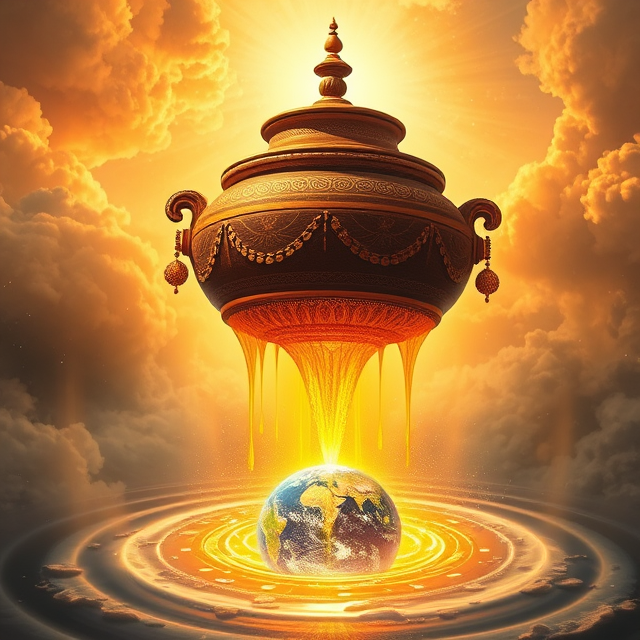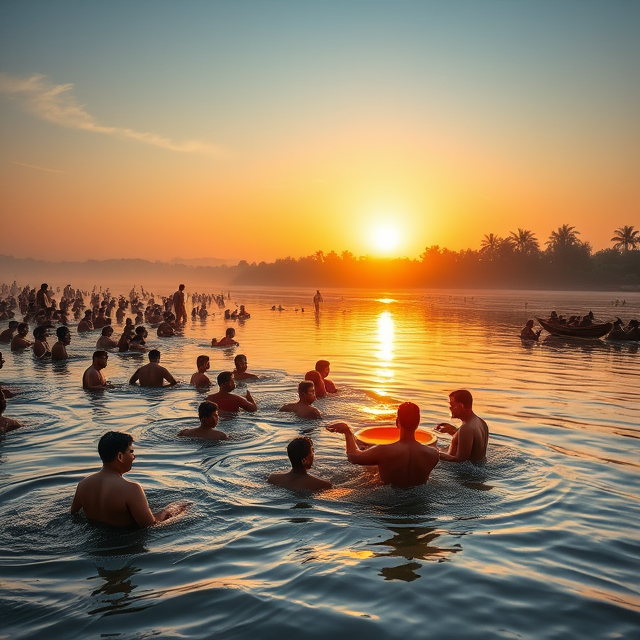Introduction
The Maha Kumbh Mela 2025 is not just a grand religious congregation but a celebration of ancient mythology and profound spiritual significance. Rooted in age-old legends, the Kumbh Mela holds a unique place in Hindu culture, drawing millions of devotees seeking spiritual enlightenment. In this blog, we explore the fascinating mythology and stories that form the foundation of this sacred event.

1. The Churning of the Ocean (Samudra Manthan)
The origin of the Kumbh Mela is intertwined with the Samudra Manthan, a story from Hindu mythology. According to the legend, gods (Devas) and demons (Asuras) came together to churn the ocean to extract the nectar of immortality, or Amrit.
- Key Events:
- Lord Vishnu, in his Kurma (tortoise) avatar, supported Mount Mandara, used as the churning rod.
- The churning produced various treasures, culminating in the pot of Amrit.
- Connection to the Mela:
The Kumbh (pot) of Amrit spilled drops at four locations: Prayagraj, Haridwar, Ujjain, and Nashik. These places became the sites of the Kumbh Mela.
2. The Divine Struggle for Amrit
Once the nectar emerged, a fierce battle ensued between the gods and demons. Lord Vishnu, in his Mohini avatar, cleverly distributed the Amrit to the gods. However, during the struggle, drops of the nectar fell on Earth, sanctifying the four Kumbh Mela locations.
- Astrological Significance:
The celestial alignment of the planets during the Mela reflects the mythological events of the nectar’s fall.
3. The Role of Lord Vishnu
Lord Vishnu plays a central role in the legends of the Kumbh Mela. His Kurma and Mohini avatars symbolize divine intervention to restore balance and ensure that the nectar reached the righteous Devas.
- Spiritual Message:
The story highlights the triumph of good over evil and the importance of perseverance in achieving divine blessings.
4. The Journey of the Kumbh
The mythology behind the Kumbh Mela also includes the journey of the nectar pot, carried by Garuda, the celestial bird. To protect the Amrit, Garuda flew across the heavens, spilling drops at the four holy sites.
- Symbolism:
This journey signifies the sacred connection between the heavens and the Earth, linking the divine to humanity.
5. The Shahi Snan (Royal Bath)
The tradition of the Shahi Snan, the holy dip taken by saints and devotees, traces back to the belief in purifying sins and attaining Moksha (liberation). The rivers at the Kumbh Mela sites are considered imbued with the divine nectar, offering spiritual renewal.
- Interesting Fact:
The first Shahi Snan is led by the Akharas, showcasing a spectacular procession of saints and sadhus.
6. The Four Sacred Rivers
Each Kumbh Mela location is associated with a sacred river:
- Prayagraj: Confluence of Ganga, Yamuna, and Saraswati.
- Haridwar: Ganga.
- Ujjain: Shipra.
- Nashik: Godavari.
- Divine Blessings:
Bathing in these rivers during the Kumbh Mela is believed to cleanse one’s soul and wash away past sins.
7. The Legends of Sage Durvasa and Indra
Another legend linked to the Kumbh Mela involves Sage Durvasa, whose curse led to the weakening of the Devas. This necessitated the churning of the ocean to retrieve the nectar of immortality, further emphasizing the importance of the event.
Conclusion
The Maha Kumbh Mela 2025 is not merely a religious gathering; it is a living embodiment of ancient mythology and spiritual beliefs. The legends of the nectar, the celestial events, and the holy rivers create a tapestry of faith that continues to inspire millions. Understanding the mythology behind the Kumbh Mela deepens our appreciation of its timeless significance and its enduring spiritual legacy.


Thanks for sharing. I read many of your blog posts, cool, your blog is very good.
Thanks for sharing. I read many of your blog posts, cool, your blog is very good.
Can you be more specific about the content of your article? After reading it, I still have some doubts. Hope you can help me.
Thank you, your article surprised me, there is such an excellent point of view. Thank you for sharing, I learned a lot.
Your article helped me a lot, is there any more related content? Thanks!